#Mary magdelene
Text

“All four gospels witness to Mary Magdalene as the premier witness to the resurrection - alone or in a group, but in all cases named by name. . . All four gospels insist that when the other disciples are fleeing, Mary Magdalene stands firm. She does not run, she does not betray or lie about her commitment, she witnesses. But why, one wonders, do the Holy Week liturgies tell and re-tell Peter's threefold denial of Jesus, while the steady, unwavering witness of Magdalene is not even noticed? How would our understanding of the Paschal Mystery change if [the role of Magdalene was acknowledged?] What if, instead of emphasizing that Jesus died alone and rejected, we reinforced that one stood by him and did not leave? For surely this other story is as deeply and truly there in the scripture as is the first. How would this change the emotional timbre of the day? How would it affect our feelings about ourselves? About the place of women in the church? About the nature of redemptive love?”
~ Cynthia Bourgeault, 'The Meaning of Mary Magdalene'
(Ian Sanders)
14 notes
·
View notes
Text
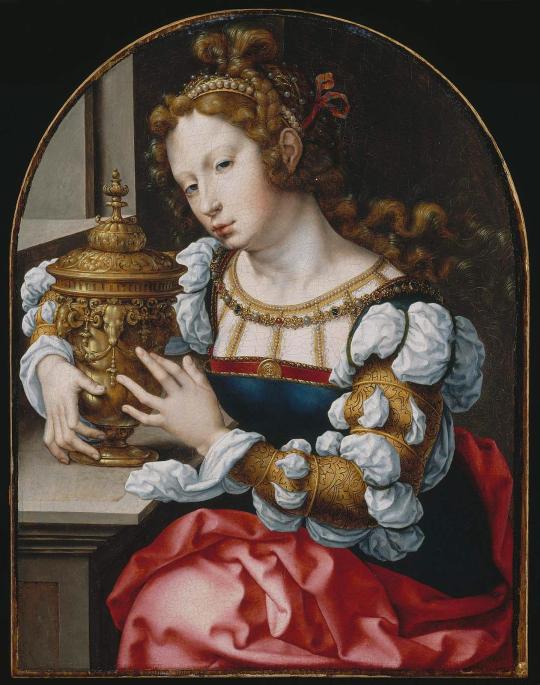
Mary Magdalen, Jan Gossaert, 1525-30
#Mary magdalen#Mary magdelene#jan gossaert#gossaert#1525#1530#1520s#1530s#16th century#painting#portrait#art
27 notes
·
View notes
Photo
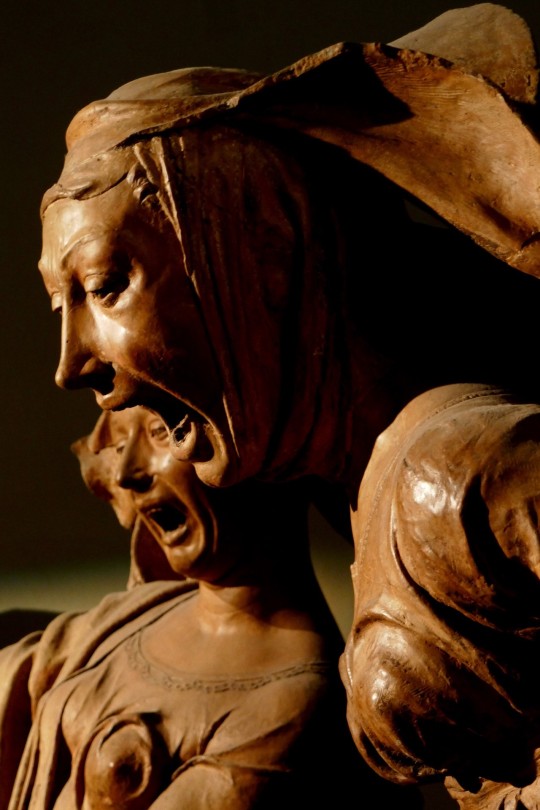
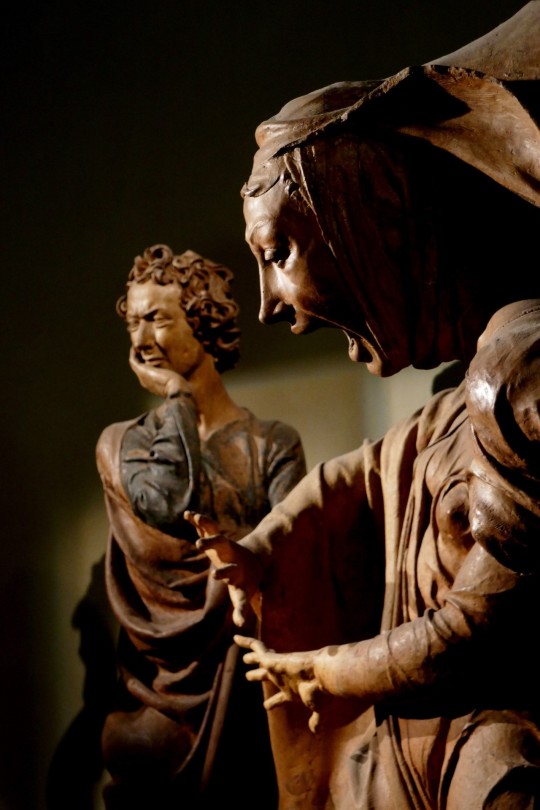
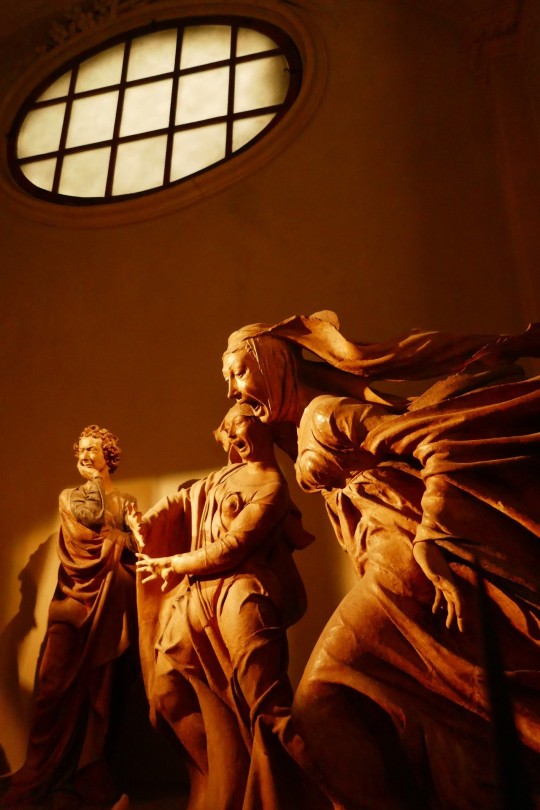


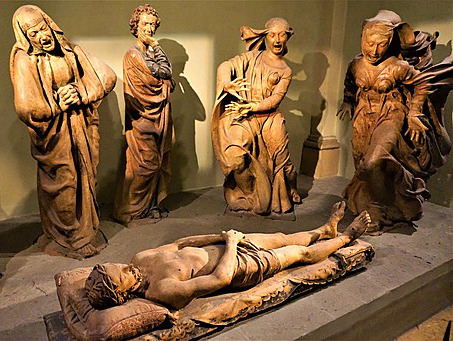

Niccolò dell’Arca (Italian, 1435-1494)
Lamentation over the Dead Christ - terrracotta - 1463
detail - Mary Magdalene with Mary of Cleophas behind
detail - Mary Magdalene with John the Evangelist behind
detail - Mary Magdalene with Mary of Cleophas & John the Evangelist behind
detail - Mary of Cleophas
detail - Mary Magdalene with Mary of Cleophas & John the Evangelist behind
detail - Christ with the Madonna, Saint John, Mary of Cleophas and Mary Magdalene behind
Niccolò dell’Arca - complete seven-figure grouping of Lamentation over the Dead Christ - terrracotta - 1463
Lamentation over Dead Christ is a sculptural group of seven terracotta figures housed in the “Sanctuary of Santa Maria della Vita” — a Baroque church in Bologna, Italy.
The work is composed of life-size figures in terracotta displaying dramatic pathos. The expressions of grief and torment on the faces is intensified by the realism of their dramatic facial details.
Christ is at the center lying with his head reclining on a pillow. Around him are the other figures, Mary of Cleophas and at the feet of Christ, Mary Magdalene, torn by pain with clothes swelled by the wind.
The other figures are more composed, even as their faces show their pain and grief. The Madonna has her hands folded and clenched.
Mary, the mother of James the Greater and John the Evangelist, is shown squeezing her thighs in a gesture of regret, while Saint John is silently weeping, with a palm under his chin.
Detached from the other witnesses is the figure kneeling in Renaissance clothes, on the left, representing the artist Giuseppe D’Arimatea and looking towards the observer.
The drama and the pathos of some of these figures are unrivaled in the art and culture of the time. Scholars argue that Niccolò dell’Arca drew inspiration from the realistic sculpture of Burgundy, with its focus on Renaissance Humanism. The Burgundian elements in his sculpture are attributed by some art historians to his work in Naples with the Catalan sculptor Guillem Sagrera who influenced by his style. Others reject this theory and suggest that he traveled to France in the late 1460s and then worked in Siena, where he was influenced by the works of Jacopo della Quercia and Donatello.
The theme of the Lamentation of Christ is common in medieval and Renaissance art, although this treatment by Niccolò dell’Arca is unusual for the period.
more
#art by others#other's artwork#Niccolò dell’Arca#sculpture#terracotta#lamentation#Christ#Mary Magdelene#life-size
110 notes
·
View notes
Text
3 notes
·
View notes
Text
"How come the more you have, the more that people want from you?
The more you burn away, the more the people ear from you
The more you pull away, the more that they depend on you"
— FKA Twigs
3 notes
·
View notes
Text






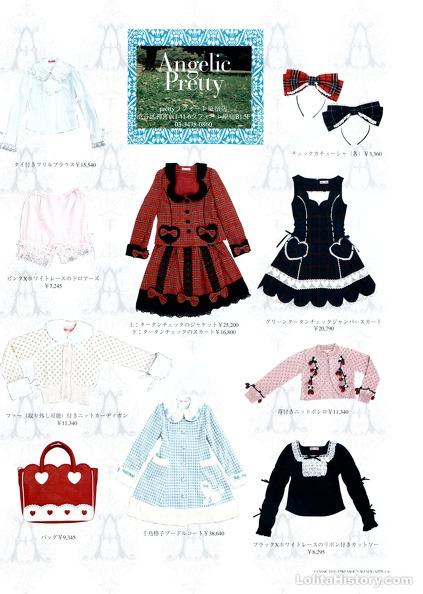
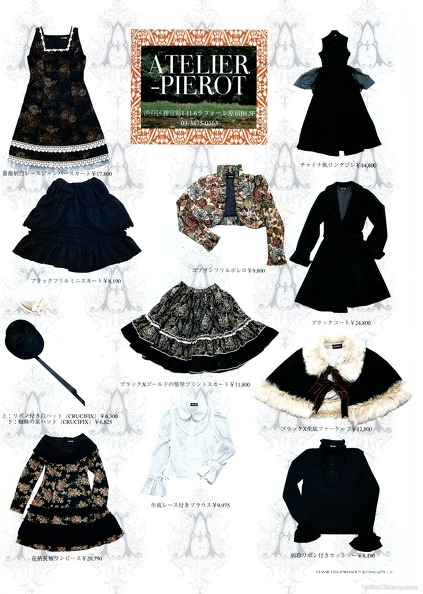
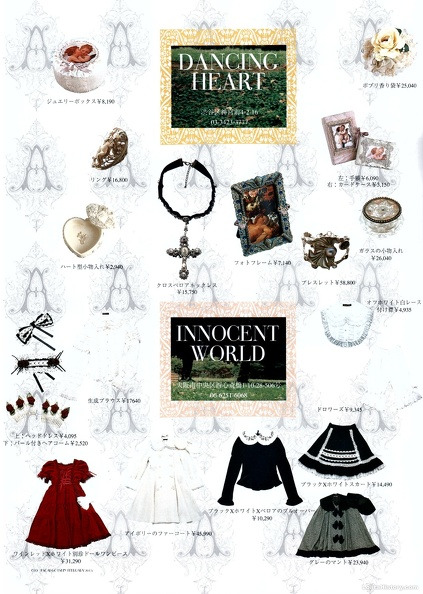
brand displays in escargot skin magazine
#mary magdelene#victorian maiden#moi meme moitie#visible#baby the stars shine bright#metamorphose temps de fille#angelic pretty#atelier pierrot#dancing heart#innocent world#fashion#magazine#egl#queue sera sera
9 notes
·
View notes
Text
HER STORY: Christ's Ministry, Mary of Magdala
We’ll first follow Mary through the years she was a student and supporter of Jesus, then we will spend most of our time in the Garden with Mary at Christ’s empty tomb
#MaryofMagdala #Magdelene #Resurrection #EmptyTomb #GardenTomb
Throughout his ministry, Jesus gathered around him men and women who became a community of 120 people joined in their love for and faith in Jesus. And one of those women was Mary of Magdala. She is mentioned fourteen times, in all four Gospels, and her name is almost always placed first, seemingly implying she was first in service, first in support. However, Mary’s most significant story appears…

View On WordPress
#empty tomb#Garden tomb#magdelene#Mary Magdelene#Mary of Magdala#Resurrection#who are you looking for#zeteo
0 notes
Text
Live Stream Sunday School - December 10, 2023
John 20:1-10
#sunday #sundayschool #livestream #John #Peter #Jesus #MaryMagdalene #Mary #Body #wrapping #linen #faith #tomb #HeisRisen #risen #believe #SonofGod #Messiah #account #akron #akronohio #thealliance
youtube
View On WordPress
#body#faith#He is risen#Jesus#John#John 20#linen#livestream#Mary#Mary Magdelene#Messiah#Peter#risen#Son of God#tomb#wrapping#Youtube
0 notes
Text
The Good, The Bad, and The Santos
I used to be a movie critic so I don’t take much of what they say to heart.
Nor do I care that much about what the now ex-public servant George Santos, the self-proclaimed Mary Magdalene of Congress, has to say about anything.
But first, let’s talk about the critics. We’ll get to Mary, I mean, George, in a few moments.
Not yet, Mary!
My former colleague and fellow critic at Daily Variety,…

View On WordPress
#Bernie Sanders#botox#congressman santos#credit cards#franz rogowski#george santos#markwayne mullin#mary magdelene#new york film critics association#nyfca#oprah yikes#Outfest#passages#senate#snl george santos cold open#yikes
0 notes
Photo

Francisco Ribaltá, (Spanish, 1565-1628)
Mary Magdalene before Christ’s Tomb, c.1612
Museo del Prado
#Francisco Ribaltá#spanish art#spanish#european art#classical art#mary magdelene before christ's tomb#1600s#art#fine art#oil painting#christian art#catholic art#spanish woman#christianity#christian#catholic#roman catholic#roman catholic art#mary magdalene#1500s#traditional art#redhead#woman
57 notes
·
View notes
Text
Anyone else's magic/practice NOT actually use Satan/Devil worship buut you still use iconography of The Devil since "if you're gonna call me a Devil worshipper i may as well 🤷".
Plus it fits with the Horned God look/symbolism.
****(not including Lucifer because i work with Luciferia/the Morning Star)
#i'm a Christian Pagan- so i take christian gods/Saints/Spirits/People and keep them as Gods.#i'm a Gnostic because I believe in.. Gnosis 🤷 that Mary Magdelene was a Great Teacher#but im NOT a Devil or Satan worshipper. I don't believe in the Devil or Satan.#pagan blog#pagan wicca#paganism#hellenic paganism#polytheistic#lucifer deity#satanism#symbolism#english folk magic#gnosticism#christian witchcraft#christian pantheon#christian mysticism#paganblr#pagan witch#folk witchcraft#horned god#the horned god#oceannotfound blogs
8 notes
·
View notes
Text
//I don't consider Heaven Homophobic
I go by the OG version that says a man shouldn't lay with a child
Heaven doesn't care if you like men women or whatever
I also don't believe 90% of the Bible is accurate to what Heaven actually is. Those are human beliefs, not how things actually are
#mun speaks#especially because i consider st peter openly gay#and also think st peter was in a poly relationship with jesus and the other apostles#judas betrayed Jesus cause they broke up lol#also mary magdelen was in there lol#i had forgotten her name and had to google it lol but yes jesus was poly and pansexual#so heaven can't be homophobic
3 notes
·
View notes
Text
youtube
LEARNING FROM ST MARY MAGDELENE
A podcast with pictures reflecting on the devotion of St Mary Magdelene.
3 notes
·
View notes
Text
need to talk to gerard about jesus christ superstar
3 notes
·
View notes
Text
SAINT OF THE DAY (July 22)

On July 22, the Church celebrates the feast of St. Mary Magdelene, one of the most prominent women mentioned in the New Testament.
Her name comes from the town of Magdala in Galilee, where she was born.
Scripture introduces her as a woman “who had been healed of evil spirits and infirmities: Mary, called Magdalene, from whom seven demons had gone out” (Lk. 8:2).
Some scholars identify Mary Magdalene with the sinful woman who anointed the feet of Christ with oil in the house of Simon the Pharisee (Lk. 7:36-50).
Others associate her with Mary, the sister of Martha and Lazarus (Lk. 10:38-42, Jn. 11).
Some believe the three figures to be one person, while others believe them to be three distinct individuals.
What the Scriptures make certain about Mary Magdalene is that she was a follower of Christ, who accompanied and ministered to him (Lk. 8:2-3).
The Gospels record her as being one of the women present at Christ’s crucifixion.
In addition, she was the first recorded witness of the Resurrection.
The Gospels all describe Mary Magdalene going to the tomb on Easter morning. When she saw that the tomb was empty, she stood outside, weeping.
Jesus appeared to her and asked her, “Woman, why are you weeping? Whom are you looking for?” (Jn. 20:15)
She did not recognize him, however, and thought he was the gardener, until he said her name, “Mary!” (Jn. 20:16)
Upon hearing this, Mary recognized him. She returned to the grieving disciples to announce to them the message of the Resurrection.
Pope Benedict XVI spoke about Mary Magdalene in his address before the Angelus on 23 July 2006. He referred to her as “a disciple of the Lord who plays a lead role in the Gospels.”
The Pope recalled Mary Magdalene’s presence “beneath the Cross” on Good Friday, as well as how “she was to be the one to discover the empty tomb” on Easter morning.
“The story of Mary of Magdala reminds us all of a fundamental truth,” Pope Benedict said.
“A disciple of Christ is one who, in the experience of human weakness, has had the humility to ask for his help, has been healed by him, and has set out following closely after him, becoming a witness of the power of his merciful love that is stronger than sin and death.”
On 10 June 2016, the liturgical celebration honoring St. Mary Magdalene was raised from a memorial to a feast, putting her on par with the apostles.
5 notes
·
View notes
